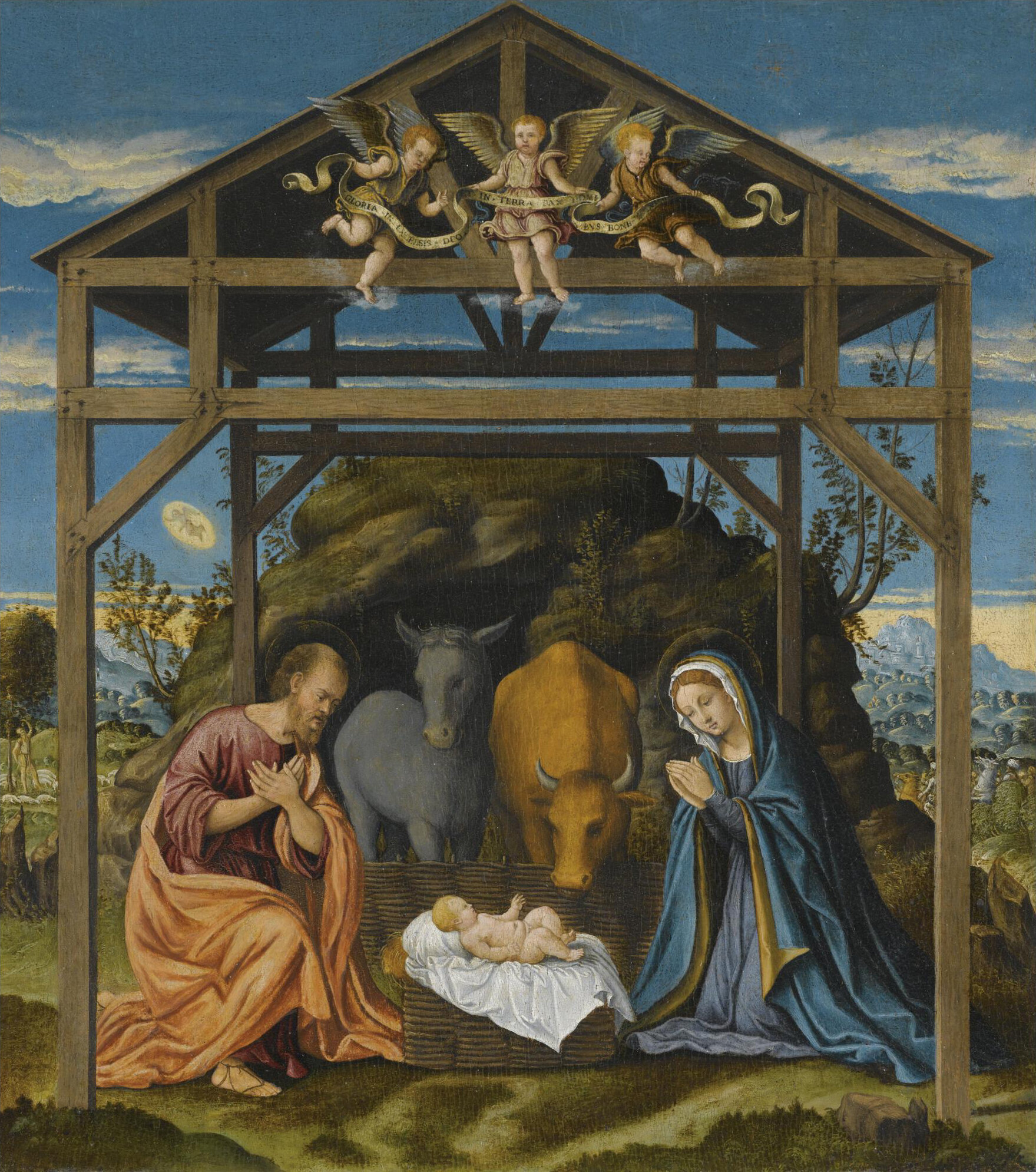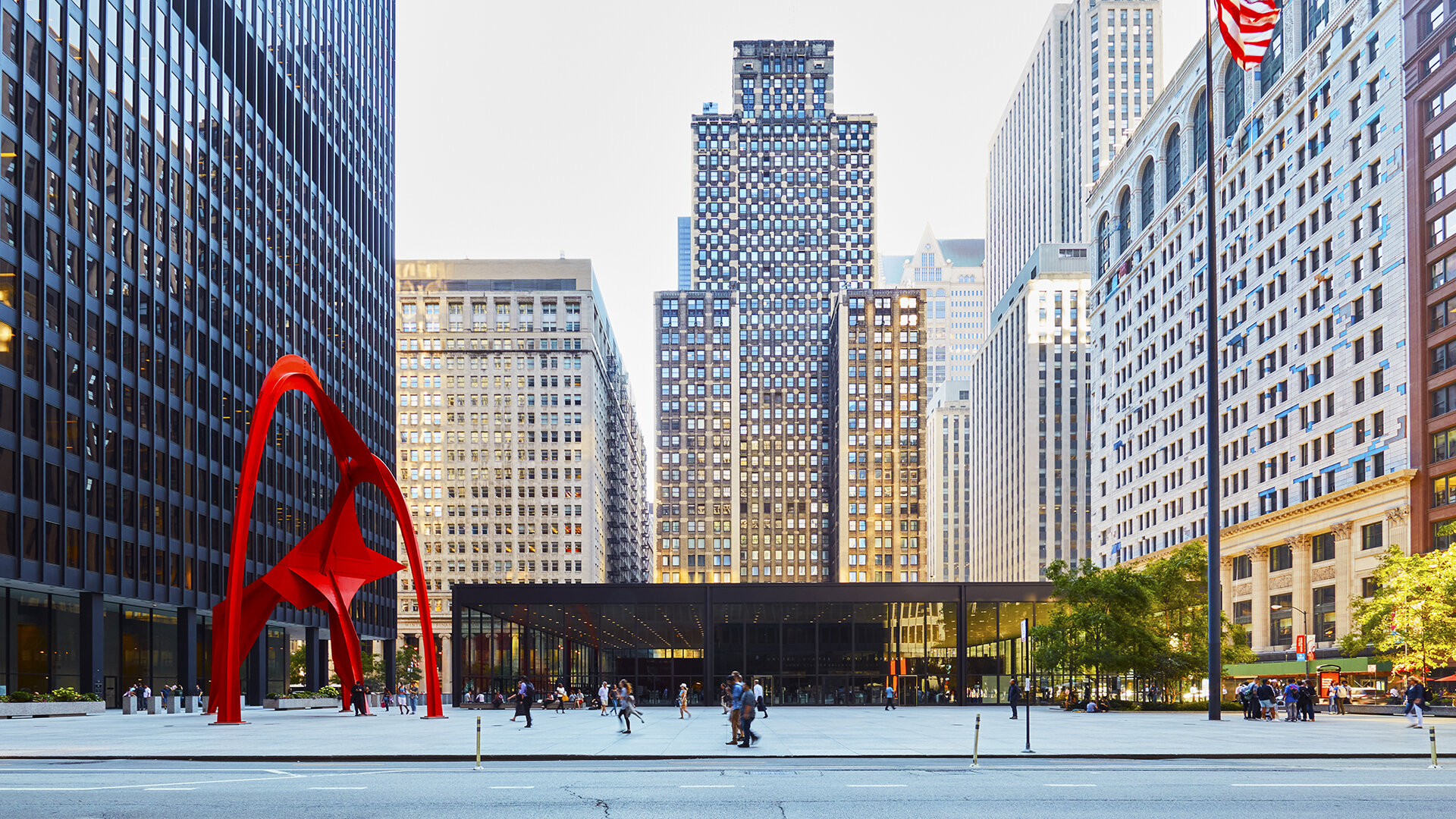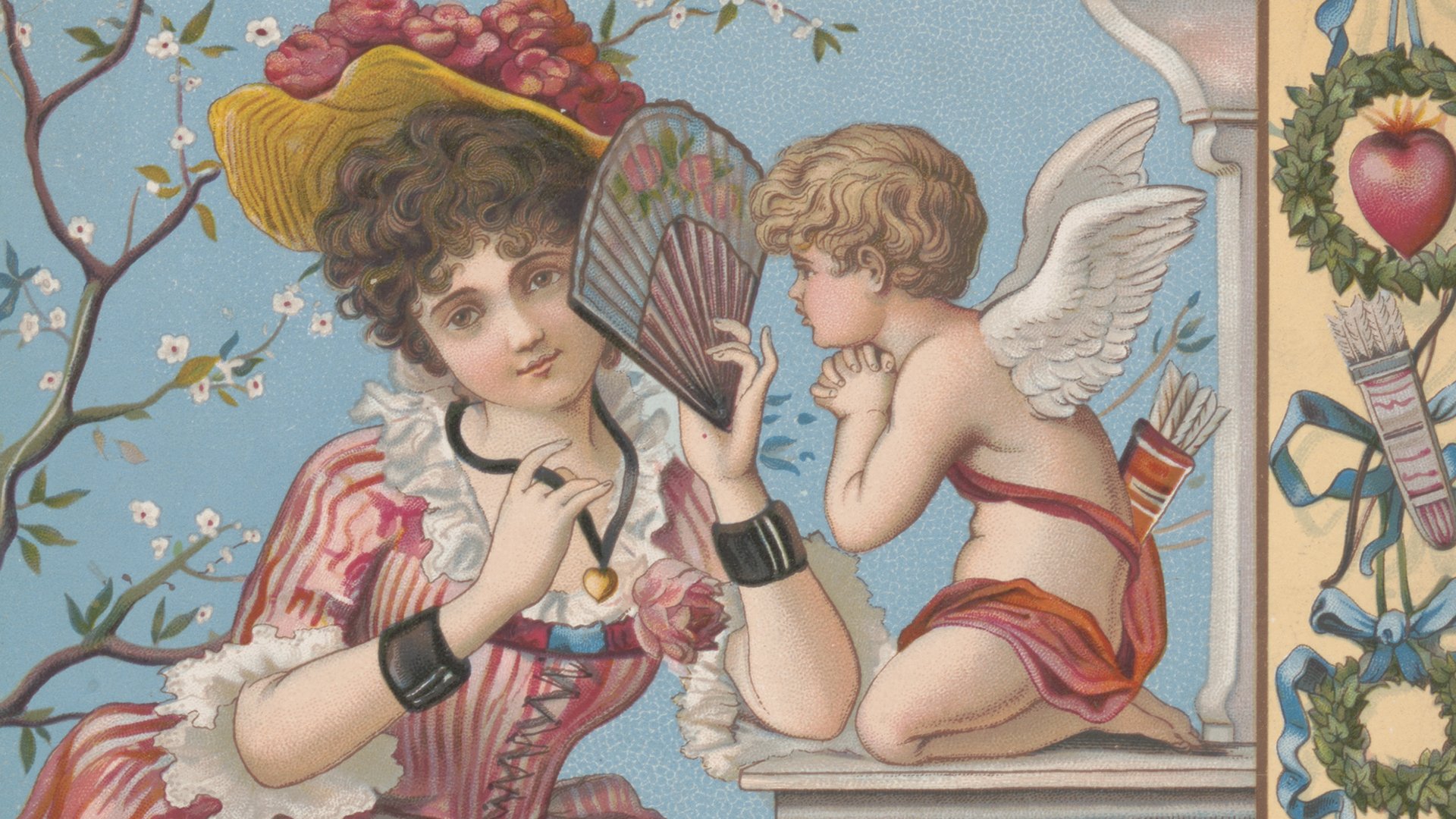Banksy’s Updated Nativity for Palestine

Banksy’s newest sculpture has been unveiled just in time for Christmas and is dedicated to the Palestinians living in Israeli occupation.
Cover photo: A new artwork dubbed Scar of Bethlehem by the artist Banksy is displayed in the Walled Off Hotel, in the West Bank city of Bethlehem, on Sunday (2019). Majdi Mohammed/Associated Press and via CBC.
WARNING: The following article features and/or discusses genocide, occupation, NAZIs, and violence.
The Nativity Updated
American comedian Bill Maher recently joked on his show Real Time about updating Christmas songs for the new ‘woke’ era. Among the revised titles was “O Little Town of Bethlehem That Was Stolen From the Palestinians”. The line received plenty of laughs. Certainly in the United States, Christianity seems divorced from its Middle Eastern origins. Back in 2013, Fox News presenter Megyn Kelly stated, “Santa just is white […] Jesus was a white man too.”
This past Saturday, anonymous British artist Banksy unveiled his own version of the classic Nativity, titled Scar of Bethlehem. The scene is reminiscent of traditional depictions but with one notable difference, an imposing concrete wall with a star-shaped mortar hole. As Christmas becomes increasingly commercialized and mythologized, perhaps it’s time to remind ourselves of the history of the holiday and the city.
Banksy in Palestine
The sculpture was unveiled at The Walled Off Hotel in the historic city of Bethlehem which Banksy opened as a dystopian attraction in 2017 (a play on the famous Waldorf Hotel). The hotel boasts that it offers “the worst view in the world.”
The Walled Off was opened to commemorate the centennial of the British Balfour Agreement. “It’s exactly 100 years since Britain took control of Palestine and started rearranging the furniture – with chaotic results,” wrote the British artist in a statement, clearly expressing a sense of guilt and outrage.
The hotel sits opposite the “temporary” barrier erected by the Israeli government, which separates the Palestinian West Bank from the rest of Israel. Construction first began in 2002. The International Court of Justice at the Hague ruled the wall was a violation of Palestinian rights but the opinion was nonbinding and nothing has since been done to remedy the situation.
According to an article published by the Guardian in 2017, the site of the Walled Off is “officially under Israeli military control — meaning it is legal for Israelis to stay there — [but] all the roads to reach it involve an illegal journey through Palestinian-controlled territory.”
A statement issued by Banksy upon the opening of the hotel read, “Walls are hot right now, but I was into them long before [Donald] Trump made it cool.” Banksy frequently visits Palestine, with graffiti dating back to 2005. He wrote then, “The wall is illegal under international law and essentially turns Palestine into the world’s largest open prison.” In fact, it was Banksy’s visit to the West Bank that made him into an international star.
Graffiti has long been used as a tool of resistance, particularly in the region, dating back to the first Palestinian uprising known as the Intifada. Critics have argued that the hotel exploits Palestinian misery and that “aspects of the hotel trivialise the occupation.” According to the hotel’s website, “any profits [are funneled] back into local projects.”
Famously Unknown
Just who is Banksy? That’s a good question. He’s the most famous unknown person in the world. Believed to be a male born in the 80s in Bristol, England, Banksy is a street artist who leaves graffiti in cities all over the world, often loaded with socio-political commentary, like a protester armed with a bouquet of flowers instead of a Molotov cocktail.
Banksy is recorded as saying, “Every other type of art compared to graffiti is a step down.” Since its inception, graffiti has been a democratic medium, enjoyed by a larger population than curated art confined in museum walls.
Arguably the most important cartoonist of our time, Banky’s creations feature a sardonic wit that is often anti-authoritarian and iconoclastic. Banksy rose to prominence in the 90s and he began to use stencils in 2000, developing a visual lexicon of rats, police, and balloons.
Banksy captured the public’s imagination with his 2010 film Exit Through the Gift Shop and he was lauded as one of Time magazine’s 100 most influential people that same year. Some viewers hypothesized that street artist Mr. Brainwash, Thierry Guetta, is actually Banksy himself.
Why is Banksy anonymous? The primary reason is that graffiti is a criminal act. No artist of Banksy’s notoriety would be able to create graffiti again if they had a public identity. The anonymity is also certainly part of Banksy’s appeal, generating a culture of mystique that allows viewers to focus on his message rather than his biography (to mixed success). But perhaps there is a philosophical reason as well, as Banksy is as faceless as many of the societal forces he criticizes.
Capitalism and Criticism
Since his start, Banksy quickly developed a reputation as an irreverent critic of capitalism and global struggles. In a 2007 e-mail exchange with writer Lauren Collins of The New Yorker, Banksy wrote, “I have been called a sellout, but I give away thousands of paintings for free, how many more do you want?” later adding, “I love the way capitalism finds a place—even for its enemies.”
In 2015, Banksy temporarily opened his own cynical theme park Dismaland, in an obvious rebuke of Disneyland’s hedonistic consumerism. Banksy’s unrelenting critiques of consumerism and capitalism have become fodder for online discussions (and memes) for a public that sometimes finds his critiques hollow.
Banksy made international headlines in 2018 after one of the renditions of his iconic Girl with Balloon ostensibly self-destructed immediately after it was declared sold at Sotheby’s Auction House in London. To everyone’s shock, the painting was fed through a shredding device installed into the frame.
Sotheby’s proudly declared the moment “instant art world history” leading to rumors that Banksy had colluded with the auction house. It’s unclear how inspectors could have missed the shredding device or how it was activated.
In a video released after the shredding, Banksy revealed how and why he created the device: “A few years ago I secretly built a shredder into a painting, in case it was ever put up for auction…” Banksy also paired the video on Instagram with the Pablo Picasso quote, “The urge to destroy is also a creative urge.”
Banksy has frequently expressed contempt for the art world as his work continues to fetch higher and higher prices. Was Banksy ‘trolling’ collectors or was he simply participating in the inflation of his market value? The great irony is that both possibilities are true.
Culture writer Aja Romano of Vox interpreted the action as a critique of “the commodification of art” as well as “a critique of virality” itself. Girl with Balloon, now retitled Love is in the Bin, sold for $1.4 million but some art dealers estimate the work may be worth double the value after the stunt.
A History of Palestine
Palestine existed as a region in the Arab Ottoman Empire for hundreds of years. Ottoman land was occupied by Allied powers, specifically Britain’s forces, during the dissolution of the Ottoman Empire as a result of World War I.
Pushed by Zionist leaders, British foreign secretary Arthur James Balfour promised that Britain would “favour the establishment in Palestine of a national home for the Jewish people” in what was called the Balfour Declaration of 1917. In 1920, Britain was given full control of Palestine under a League of Nations Mandate. The majority-Muslim nation would become home to the first and only Jewish state in the world.
Zionism is a movement that seeks to create a Jewish national state in Palestine, a reference to Mount Zion in Jerusalem. All three Abrahamic faiths have ties to the historic city, which is home to landmarks of all three religions. Jewish people want to return to their ancient homeland, which was ruled by King David in 1,000 B.C.E. and according to the Quran, Jerusalem is the last place the Prophet Muhammad visited prior to his ascension to heaven.
In the controversial 1933 Haavara Agreement, NAZI Germany facilitated the relocation of Jews to Palestine, prior to the start of the Holocaust. The genocide of six million Jews, created a new sense of urgency for the establishment of a Jewish state.
On May 14th of 1948, the State of Israel was established as the British Mandate of control came to an end. U.S. President Harry Truman recognized the new nation on the same day. Armed Zionist forces expelled over 750,000 Palestinians from their homeland.
Following escalating tensions and border disputes between Israel and Arab states, Israel launched a preemptive attack and seized control of Palestinian land in the 1967 Six Day War, marking the start of the Israeli occupation. Israel has since exerted increasing control over the Palestinians, resulting in violent protest like the Intifadas.
Tourism Economy
After the Oslo Accords of 1993 and 1995, Palestinians were subjected to closures, curfews, roadblocks, and checkpoints. Tourism became an economic necessity and a means to foster international solidarity with Palestinian struggles. Between 1994 and the second Intifada in 2000, tourism doubled in the West Bank to over 105,000 visitors a month. Following the second Intifada, Israeli military invaded Palestinian cities, devastating local economies.
Bethlehem has tried to recover, renovating Star Street that leads to the city’s most famous building, the Church of the Nativity, believed to be built on the grounds where Jesus was born. This year, pilgrimage groups alone are expected to account for 1.4 million tourists according to Mayor Anton Salman.
Lack of land and high unemployment has lead to a tragic situation. “We are living in a touristic prison. Yes, we get lots of tourism, but for the Palestinian people, it’s pretty much a prison,” said Suhail Khalilieh, head of the Settlements Monitoring Department at the Applied Research Institute.
The Palestinian Authority has spent over $17 million since 2013 to renovate the Church of the Nativity but it is unclear if this has been a worthy investment. The city’s surrounding infrastructure has been ignored and pilgrims don’t contribute much to the economy. According to Reverend Munther Isaac, Bethlehemites feel “invisible during Christmas,” explaining, “I say so because [pilgrims] main interest is to visit a site, stones, but not [so] much the people themselves, the community.”
Banksy’s Walled Off Hotel was initially announced as a temporary project in 2017 but it has become a permanent attraction, “boosting the struggling Palestinian economy.” Palestinian tourism minister Rula Maayah has praised the artist, “He promotes Palestine and focuses on the occupation, but at the same time he is talking about the beauty of Palestine.”
Depictions of the Nativity
The Nativity is a religious scene depicting the newborn Jesus with the Virgin Mary and Joseph; it was first represented in the 4th century. Prior to then, Easter was the most important holiday in Christianity.
“Nativity scenes only caught on after Christianity was adopted by the Romans and the pagan festival of the birth of the Sun, after the winter solstice, was replaced with the Christian festival of Christmas — birth of the Son,” says Swee Hong Lim, Baylor University assistant professor and Ph.D. who has researched Christian iconography.
Much of Christmas as we know today is the result of embellishments not found in the Bible. For instance, it is Pope Julius I who chose December 25 as the day of celebration. There is no description of animals amid the birth of Jesus but two have become popularized over the centuries. “No nativity scene will give up its ox and donkey,” Pope Benedict announced in 2012.
The ox and donkey are mentioned in the Book of Isaiah: “The ox knows its owner and the ass its master’s stall; but Israel, my own people, has no knowledge, no discernment.” This is interpreted as prophecy that Jews will not recognize Christ as the Messiah.
Mary and Joseph traveled 90 miles (approximately 145 kilometers) from their home in Nazareth to Bethlehem to register for a Roman census. As written in the Bible, “While they were there, the time came for her to deliver her child. And she gave birth to her firstborn son and wrapped him in strips of cloth and laid him in a manger, because there was no place for them in the inn.”
The translation of the word “inn” has been disputed by historians but the symbolism is clear. While laying in the manger (used as a feeding trough for animals), the newborn Jesus is first visited by shepherds, foreshadowing that he will become the sacrificial “Lamb of God, who takes away the sin of the world!”
Banksy’s newest sculpture, Scar of Bethlehem retains the Holy Family, the manger, and the ox and donkey. There is one major change, the addition of the Israeli barrier. The clothes of the figures are traditional, heightening the contrast between the family and the looming modern concrete wall behind them.
The title refers to the Star of Bethlehem, which was used by the Three Wise Men — also known as Magi — to find and honor the Christ child. A star-shaped mortar hole is visible in the center of the wall. Banksy employs the visual pun to suggest the barrier is the scar of Bethlehem and shame of Israel.
Artists have a tradition of representing contemporary life through the Nativity and other Biblical events so Banksy’s interpretation is not a radical departure from art history. This is among the most political versions of the Nativity, but the situation of Bethlehem has changed drastically since that of the Renaissance.
Wissam Salsaa, manager of The Walled Off Hotel, explained, “Banksy is trying to remind the world that people of Bethlehem, where Christmas was started, are not celebrating Christmas like the rest of the world.”
Banksy is also not the only person using Christmas to bring attention to pressing global issues. The Claremont United Methodist Church in California unveiled a controversial Nativity this December as well, in response to family separation at the US-Mexico border overseen by the current Trump Administration.
In a Facebook post, Karen Clark Ristine, the church’s senior minister wrote, “In a time in our country when refugee families seek asylum at our borders and are unwillingly separated from one another, we consider the most well-known refugee family in the world. Jesus, Mary, and Joseph, the Holy Family. Shortly after the birth of Jesus, Joseph and Mary were forced to flee with their young son from Nazareth to Egypt to escape King Herod, a tyrant. They feared persecution and death.”
The Future of Israel and Palestine
“Israel has never had a better friend than you,” Israeli Prime Minister Benjamin Netanyahu said to U.S. President Donald Trump while at the White House back in March. The United States has long been a crucial ally to Israel. In fact, “Israel is the largest cumulative recipient of U.S. foreign assistance since World War II.” Israel has been viewed as a fledgling democracy and strategic partner in the Middle East.
U.S. Presidents — in accordance to international consensus — have historically supported a two-state solution, the diplomatic goal to establish Israel and Palestine into two separate autonomous states, but this tradition changed when President Trump moved the U.S. embassy from Tel Aviv to Jerusalem in May of 2018, shifting U.S. policy to recognize the contested Jerusalem as the capital of Israel. The move removed any pretense of U.S. neutrality in the diplomatic negotiations.
Earlier this year — in contradiction to international law — the Trump Administration recognized Israel’s sovereignty over the Golan Heights and declared that Israel’s settlements in the West Bank are not illegal.
Opinions of Israel are shifting. Former President Barack Obama and Prime Minister Netanyahu had a publicly tense relationship. On December 11th, President Trump signed an executive order aimed to stop the growing Boycott, Divest, and Sanction movement in the guise of fighting anti-Semitism. A 2017 survey found that if a two-state is not possible, 64% of Americans support a democratic one-state solution even if that means Israel will not be a majority Jewish state.
Presidential candidate and current senator Bernie Sanders (who would be the first Jewish president of the United States if elected) has announced that U.S. foreign policy “must be pro-Palestinian as well” and has said he is willing to leverage the $3.8 billion of military aid that the U.S. gives Israel annually.
Prime Minister Netanyahu was indicted on corruption charges last month and Israel’s High Court will deliberate on December 31st whether he is allowed to form a government. It is impossible to predict what will happen but the next U.S. President is sure to scrutinize the relationship with Israel.
How to Support Palestinians this Christmas
While you are celebrating Christmas with loved ones and unwrapping presents, I urge you — as does Banksy — to spare a thought for the people of Bethlehem and all Palestinians.
It can be daunting to imagine what we as individuals can do to improve the world, but there is a range of ways that we can help. Some are as simple as engaging on social media or saying a prayer. Others require more commitment like contacting your local government representative or staging a peaceful protest.
You can also boycott Israeli products that are known to harm Palestinians such as Sabra Hummus which provides financial support to Israel Defense Forces. You can donate to Palestinian organizations or even visit Palestine yourself to support the local economy.
Merry Christmas and Happy Holidays!
























